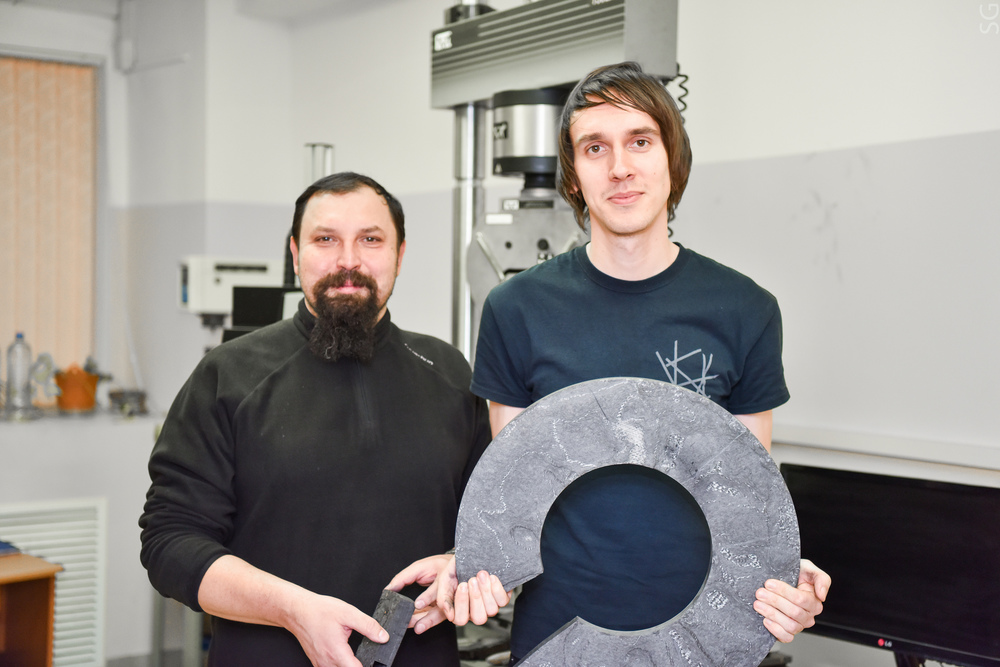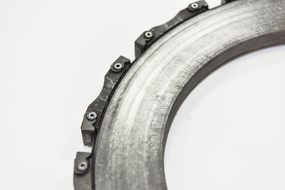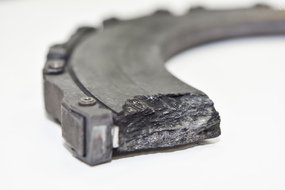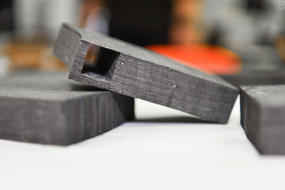Scientists from the National University of Science and Technology “MISIS” have tested experimental composite materials for aircraft brakes, developed by PJSC Aviation Corporation “Rubin”. New materials, reinforced by carbon “fabric”, have turned out to be far more durable than the current analogues. As a result of testing, the scientists developed recommendations to improve the fracture toughness of both existing and developed composite materials for braking systems, which in the long term can improve the reliability and safety of aircraft operation and reduce maintenance costs. The article on the research is published in Engineering Fracture Mechanics.
The braking system of a modern passenger aircraft is a “package” of fixed and rotating brake discs inside the wheel. When the brake is turned on, special pistons compress this package, the surfaces of the disks come into contact, and the braking process occurs due to friction. In most brake systems, friction discs are made of carbon-carbon composite material, which is highly heated when subjected to high mechanical loads.
Requirements for durability and operational resource of such materials are continuously increasing. For example, two decades ago, one set of brake discs of the aircraft had to withstand 500 cycles of" take-off-landing“, and today this figure has stepped over 2000. Therefore, the development and modification of such composite materials is engaged in a large number of scientists and companies around the world.
Team of scientists from the Center of Composite Materials (NUST MISIS), lead by senior researcher Andrey Stepashkin by request of PJSC Aviation Corporation “Rubin” investigated how resistance of various types of composite materials of brake systems changes under the influence of periodically changing mechanical loads.
Materials on the basis of discrete carbon fibers (“TERMAR-ADF”) and on the basis of carbon fabrics (experimental sample) developed by specialists of “Rubin” were used as samples. The materials differed in the temperature of the final heat treatment and reinforcement. The task of the team of NUST MISIS scientists was to find out how these factors affect the resistance of the material to the development and spread of cracks, and to choose areas for further improvement of the technology.
“It is worth remembering that the aircraft is a very complex engineering system, the cost of operation of which is many times higher than the cost of its manufacture. To ensure the safety of passengers, aviation equipment is constantly undergoing certain types of inspections. In this case, for example, brake systems are inspected not after each flight (as it requires partial disassembly of the wheels), but after a certain number of landings. Aircraft structures and the materials used in them must be of such quality as damage safety, among other things. This means that if a crack suddenly appears in the material immediately after inspection, it should not grow until the next inspection so as to cause damage to the construction” — Andrey Stepashkin comments.
Tests showed that the materials, reinforced with discrete carbon fibers, better withstand the propagation of a crack transversely to the stacking of the fibers and materials reinforced by carbon fabrics — along carbon fiber. When combining both types of reinforcement, for example, when creating a layered material, it would be possible to significantly increase the crack resistance of the material in both directions.
“Friction carbon-carbon material ‘TERMAR-ADF-OS’ is commercially produced by PJSC ‘Rubin’ and is successfully used in the brakes of almost all Russian aircraft (except old ones). Of course, there is no limit to perfection — it would be possible to increase its coefficient of friction and, perhaps, some other characteristics. We are working on it” — Anatoliy Koenigfest, one of the developers of TERMAR materials.
The more reliable the material, the less frequent inspections are needed. This, respectively, reduces the cost of aircraft operation and maintenance of aircraft, which in turn can lead to a decrease in the cost of air tickets.






